This Post May Contain Affiliate Links
In compliance with the FTC guidelines, please assume that some of the links on these posts and sites are affiliate links (Amazon or others) from which I may earn a small compensation/commission from sales of certain items at no extra cost to you from qualifying purchases.
Anytime you see a link that looks like “astore.com, paid link, #ad, #CommissionsEarned or Amazon/Amazon.com/ca,”… it can be assumed that it is an affiliate link.
To learn more, follow the link below.
How To Prevent Hand Pain For Electric Guitarists
Are you passionate about the guitar and following a strict daily practice regimen?
Longevity in the life of a guitarist is a dual process of learning how to play, protecting hand health, and remembering that this process is a journey, not a race.
The hand can be placed in an awkward or unnatural position when holding the guitar, and with the fingers constantly pressing down on the strings, over time, this can lead to cramping, stiffness or worse.

As a dedicated practitioner, sometimes it’s not uncommon to experience discomfort or pain after prolonged practice sessions or performances.
However, there is pain that needs doctor attention and pain that needs some TLC on your part.
Understanding some basic mechanics can help you distinguish between a signal to change something and an impending or developing injury.
The physical strain on your hands shouldn’t overshadow the joy of creating music.
In this guide, we’ll delve into 6 effective strategies on how to prevent hand pain for electric Guitarists from a preventative perspective to safeguard your musical prowess.
We’ll explore practical tips that will enhance your playing technique and, contribute to the longevity of your musical journey, and ensure that your love for the guitar remains harmonious with the well-being of your hand health.
Athletes From The Elbows Down
Guitarist Hand Health
In music, a guitarist is the same as an athlete from the elbows down.

Like athletes sculpting their bodies for optimal performance, a guitarist must also cultivate strength, flexibility, and endurance in their hands.
Not merely tools but instruments themselves, every strum, pluck, tremolo arm pull/push, note fretting, and finger tapping requires a delicate dance of muscles, tendons, and joints from both appendages to navigate the intricacies of modern playing techniques with precision and finesse.
However, with this pursuit of mastery comes the risk, like any other athlete, of overexertion and strain, leading to the potential for hand pain—an adversary that, much like an athlete, a guitarist must learn to navigate and prevent.
Anatomy Of The Hand
The hand is a vital tool in guitar playing and comprises many different bones, muscles and ligaments that allow for all its movements and dexterity.
Since guitar playing is not natural for your hands, the many small muscles needed for soloing, chording, performing or other 6-string acrobatics can make your hands work harder than your body is used to.
It is important to note that irritation of the joints occurs with repetitive activities even before you pick up a guitar, like working on a computer, typing, using phones, gaming, or working involving many repetitive movements.
For the guitarist and the office dweller alike, the hands bear the brunt of these sedentary habits.
There are 3 major types of bones in the hand itself, including:
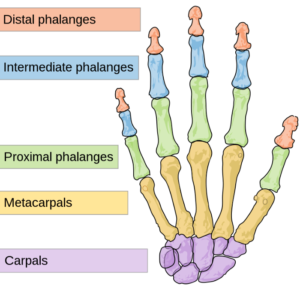
The main division is on the (right) human hand. Image courtesy of Wikimedia- Author Mariana Ruiz Villarreal (LadyofHats)- And it is released into the public domain.
- Phalanges: The 14 bones found in each hand and toe. Each finger has 3 phalanges ( distal, middle/intermediate, and proximal), with the thumb only having 2.
- Metacarpal bones: These are the 5 bones that compose the middle part of the hand.
- Carpal bones: These are the 8 bones that create the wrist.
- The carpal bones connect to the 2 bones of the arm, the ulnar and the radius bone.
Awareness and Proactive measures can go a long way in your playing longevity, and we will often mention always listening to your body and not unnecessarily putting yourself in any pain or causing injury.
1. Warm Up
Stretching And Massage Before & After You Play
If you get in the habit of stretching before & after each practice session by incorporating warm-ups and massages, you will reap the benefits for years to come.
5 to 15 minutes before and after playing is good for keeping your hands pain-free and might be the greatest tool in your arsenal to ward off finger pain and cramping, with hand massages increasing the blood flow, making practicing easier.
There Are 2 Types Of Stretching Massage Warm-ups
- Passive &
- Active
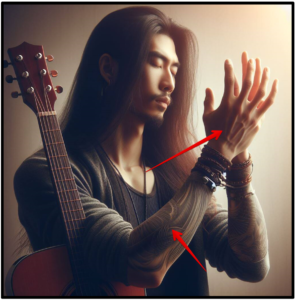
Passive warming up hands and upper extremities with gentle stretching and massage to stimulate blood flow and circulation.
Passive is generally warming your hands before you even hold a guitar to get blood flow and circulation, especially if your hands are cold.
It’s important to note that this also involves stretching and massage exercises in the upper extremities.
Like any other athlete jumping into a physical discipline, cold is a recipe for pulled ligaments and muscles that can lead to time away from your physical passions.
Also, note it’s easy to overdo these and hurt more than help, so pay attention to your body.
Tip
Apply heat before you stretch by running your hands under warm water to increase blood flow, circulation and Synovial joint fluid.
- Synovial fluid is a viscous solution found in the cavities of the joints, with the principal role of reducing friction between the cartilages during movement or use.
Watch The Video On Proper Hand Care For Musicians
Active is a more common approach to warming up as a guitarist before really letting your fingers go, and it helps prevent cold hand muscles from cramping or leading to other hand health issues.
Think of your first few minutes when you pick up the guitar as a time to get reacquainted.

Active is a warm-up practice of slowly getting your hands reacquainted with the instrument.
We recommend starting slowly, relaxed and controlled, working through scales, patterns or free playing for 10-15 minutes.
Almost anything you do on a fretboard can be an effective active warm-up if you give your hands time, and you’ll immediately feel the difference.
Gradually increase the speed as your hands warm up and build up your play until you reach your normal level.
Most guitarists generally go with the Active warm-up and bypass the Passive process; either way, a hand warm-up will happen naturally, but listen to your body again.
Tip
You can do a small Passive stretching warm-up alongside an Active one, and after you are done, follow it up with another group of small Passive stretching exercises.
2. Ergonomic Guitar Playing & Guitar Supports
With Electric players, several different Ergonomic approaches can be taken when sitting and playing an Electric guitar, but generally, they fall into 2 categories.
- Classical &
- Casual or Horizontal
Guitar Supports
These are guitar accessories or tools of the trade that aid in maintaining the instrument in as natural of a position as possible for good posture and ergonomics and preventing hand pain.
Some attach to the bottom edge of the guitar by a gentle clamp to elevate and support the instrument (watch video). In contrast, others sit on the floor, and some are just as common as a guitar strap adjusted for optimum playing, sitting or standing.
The Classical Position
The classical guitar position for an electric or acoustic guitarist is characterized by adopting a sitting posture that promotes proper body alignment, improved playing technique and comfort, minimizing the risk of strain during extended playing sessions.
This gives easy access to the high neck regions and frets with proper positioning of the thumb in the center-back of the guitar’s neck, increasing your hand’s stamina for different techniques (i.e. arpeggios and sweep picking), allowing for better control and precision.
Here’s a description of the classical guitar position that can be adapted for an electric guitarist:
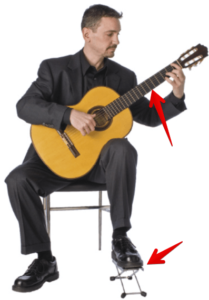
A guitarist demonstrating traditional classical guitar posture with Foot Stool Accessory- Image courtesy of Wikipedia -Author -ljguitar – and is licensed under the CC BY 2.0
- Seated Posture: Sit on a straight-backed chair without arms, allowing for freedom of movement. Position the chair so your back is straight, your shoulders maintain an even “T” shape, and both feet are flat. Sit toward the front edge of the chair to maintain an upright and relaxed posture.
- Guitar Placement: Place the electric guitar on your left leg (for a right-handed guitarist) or right leg (for a left-handed). Angle the guitar slightly upward, ensuring the neck is elevated at an angle for better visibility and access to the frets. The back of the guitar body will be resting against your abdominal area, and the inside of your right leg helps to stabilize the guitar.
- Left Arm and Hand: Allow your left arm to rest on the guitar’s upper bout, supporting it while maintaining a relaxed and natural curve. Curve your left-hand fingers over the fretboard, applying proper finger placement techniques.
- Right Arm and Hand: Keep your right arm comfortably draped over the guitar’s body.
- Overall Tension: Ensure your body is relaxed and there’s no unnecessary tension in your shoulders, neck, or arms.
Note that this sitting position needs to be adjusted with an electric guitar to accommodate personal comfort/preference and playing style. (i.e. the upward angle of the electric may not be as pronounced as with a classical guitar.) but the aim is to find a position that allows full access to the fretboard while maintaining comfort and a relaxed posture.
Experiment with different angles to find what feels most natural and comfortable.
Guitar Accessory
You may need an accessory to raise the guitar to the correct angle using a Guitar Leg Pad, attachable lap support or Footstool.
Using a footstool under your left foot (for a right-handed guitarist) or right foot (for a left-handed) to elevate the leg supporting the guitar helps achieve the classical guitar’s characteristic elevated position.
Benefits Of The Classical Position
- It stabilizes the instrument.
- Both hands have access to the entire fretboard and freedom for picking hand movements with no ergonomic bottlenecks.
- You are eliminating any general muscular tension or physical stress in your hands, wrists, forearms, upper shoulders and spine.
- Translates well when standing
Casual Or Horizontal Position
This is when you rest the guitar over the right leg with the neck nearly horizontal and your thumb generally sitting over the neck instead of behind it. (See Image)
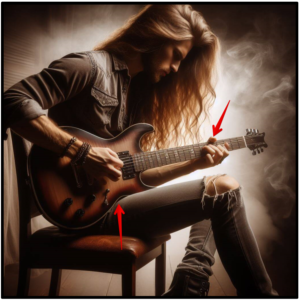
Casual or horizontal position with the guitar sitting on the right leg and thumb over the fretboard
Or bring one leg over the other to give rise to the guitar. (See Image)
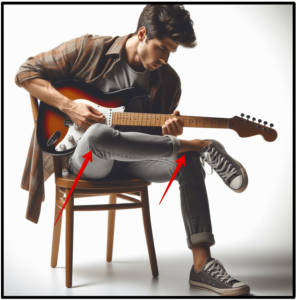
Another version of the Casual position with the right leg over the left
This can be harder on your posture and create tension in your back, neck, shoulder and wrist if playing too long without any breaks.
Be aware of your posture, for if you’re slouching on the couch, you’re probably making your hands work harder than seated upright.
Guitar Accessory
Wide padded Guitar straps, for example, can help take some of the pressure off your hands by distributing the weight more evenly even while you are playing, sitting in a casual position, or using a Lap support accessory or Footstool.
Cons Of The Casual Sitting Position
- It is harder to do wide-finger stretches based on the hand position
- It does not allow for the guitar neck to be as stable as the classical stance and can make practicing the guitar harder
- It doesn’t translate well to playing standing up – a very different position to when you are sitting, which could mean playing standing is uncomfortable and more difficult to pull off techniques you are doing while sitting.
Tip
Take time to stand and stretch your back, neck, and shoulders every 30-40 minutes if you are in a casual position to avoid tension pains in your body. (More on this later)
Ergonomics & Standing
Based on where you like your electric guitar to hang, this can change your playing dramatically and affect your playing abilities.
Unless you adopt the classical position while standing (i.e. John Petrucci), you will find that playing upright can take some getting used to, along with personal trial and error.
There is no “right way,” but listen to your body and see how effectively you can still perform while standing.

John Petrucci in concert with Dream Theater in 2012.-Image courtesy of Wikimedia -Author & Attribution: Carlos Delgado – licensed under the Creative Commons Attribution-Share Alike 3.0 Unported
Arm Length
A best practice is for your wrists to be straight when you play, and based on the player’s physical arm length, this is often the deciding factor regarding how high or low people wear their guitars. (See Image)

For example, someone with shorter arms will need the guitar higher, while players with longer arms need to lower their guitar to straighten their wrists. (ie Jimmy Page)

Jimmy Page performing onstage in 1977-Image courtesy of Wikipedia -Author APA-Agency for the Performing Arts-management-Release into the Public Domain
Poor or incorrect posture occurs when we curl or bend our wrists while trying to grip the fretboard based on the guitar hanging too low, causing tension and potential hand problems.
Tip
Important to note here is that with electric guitar, mix and match your approach. Stand and play the instrument throughout your sessions, along with rotating from a casual to a classical position.
3. Relaxed Control
Releasing Excess Tension
In classical, casual, sitting or standing positions, the most important thing to remember is to develop “relaxed control,” getting your hands to produce maximum output with the least amount of effort from a natural hand position and a relaxed grip. This might be the hardest thing to learn on guitar!
The point you want to get to is to have a relaxed hand (and body) when you’re playing, even when you’re working on something challenging.
Playing With Tension
Hand pain, stiffness, and, of course, inability to perform to your playing potential can come from pressing the strings or squeezing the neck of the guitar too tight, along with carrying tension in our shoulders and forearms, limiting our ability to relax while we play.
Better For Techniques & Playability
Learning to play with minimal tension or pressure isn’t only better for your hands–it’s also better for techniques and overall playability and preventing mistakes.
We tend to get more tense when performing, and since mistakes increase with tension, practice being as ultra-relaxed as possible, making your playing light and the hand movements fluid.
Tip
When you start to feel tension or frustration, take a moment, breathe in and out a few times, relax, refocus, and do it again; these moments of “letting go” really do help the muscles stay more relaxed.
“Whenever you feel frustrated because your fingers are not doing what you want them to do, the thing to do is relax.”
Steve Vai
This leads us to the next preventative measure for optimum hand health: put the guitar down momentarily.
4. Practice breaks
Hand Fatigue Prevention & The Rhythm Of Rest
Take breaks often. Whether sitting or standing, understand the importance of rest periods.
If your hand starts to feel uncomfortable when playing the guitar, take a break and give your hand a chance to rest between practice sessions, especially if you are woodshedding for extended periods.

Learn to take breaks throughout your practice sessions.
This is a good practice for hand health and for your mind/body and overall playing.
First, your hands were not meant to be behind a guitar continuously for hours; what this can do to your hands and body could be counteractive to your goals.
“No Pain, No Gain” is not a guitarist’s mantra.
Everyone needs breaks, and even professionals do not play continuously.
Sitting Is The New Smoking
So many factors in our professional lives involve sitting for extended periods, which only worsens, and science is now telling us that sitting is the new smoking.
 The guitar is just another discipline that involves sitting for long periods.
The guitar is just another discipline that involves sitting for long periods.
5. Body Stretching
Stretching applies not only to hands and fingers but also to arms, shoulders and back.
Implementing this into your guitar toolbox throughout the day will not only loosen up muscles and tendons but can help with overall tension and prevent arm, wrist and hand pain triggered by an imbalance or tension somewhere else in the body.
Every hour bent forward over a guitar/computer/desk; you should spend 5 minutes stretching yourself the opposite way and doing this daily.
This takes us to our final preventative measure…
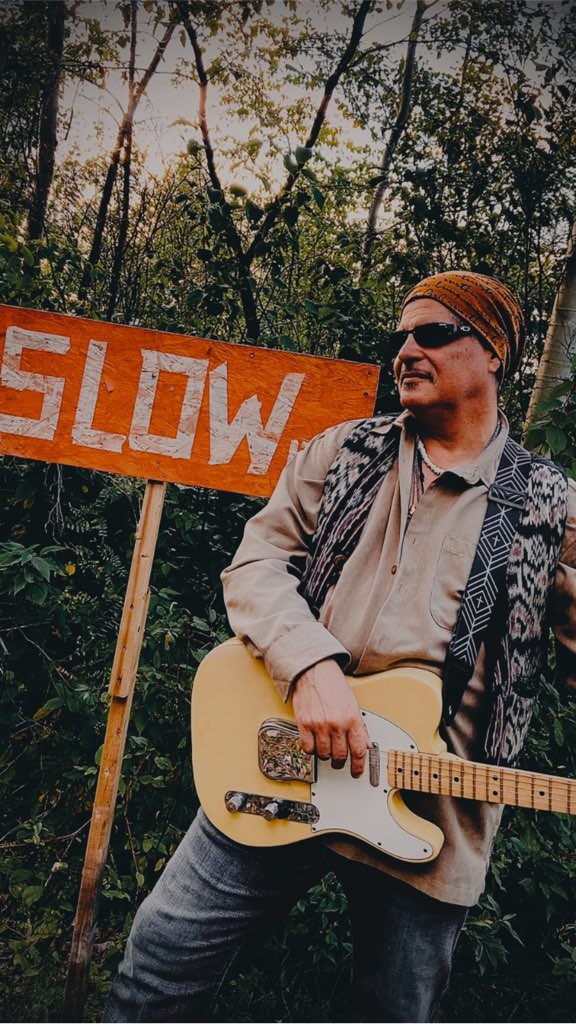
Starting A Journey At 7 Years Of Age, The Love For The Guitar Only Became Stronger Going Into My Teens. This Leading To An Exciting Time Of Teaching, Performing, And Recording. Join Me Now As We Can Bring The Love Of This Instrument To Other Musicians Globally.
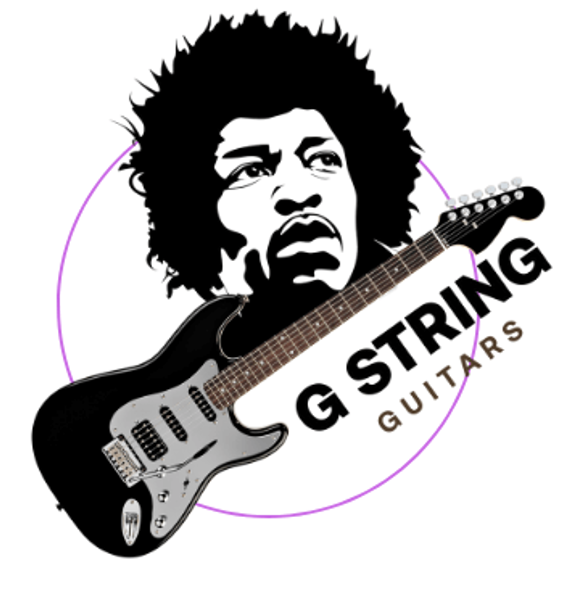
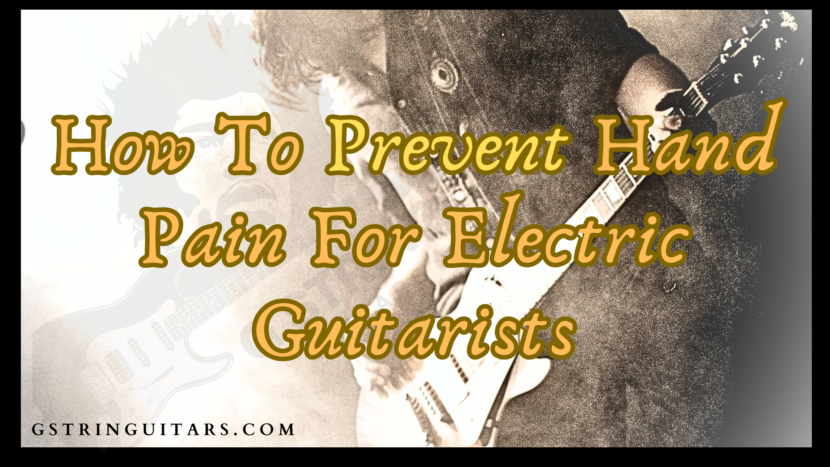
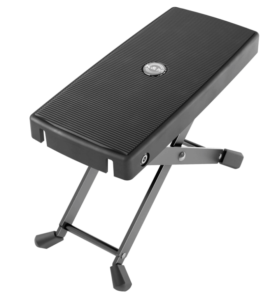
 Consistency And Balance Sessions
Consistency And Balance Sessions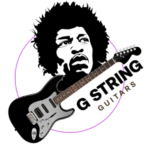




The insights offered in your post about “How To Prevent Hand Pain For Electric Guitarists” are precious, especially for those embarking on their guitar journey.
The comparison of guitarists to athletes “from the elbows down” is a compelling concept, underscoring the importance of hand strength, conditioning, and endurance. This athlete-like perspective could revolutionize how beginners approach their practice, prioritizing hand health as much as skill development.
Practically, the emphasis on ergonomic playing positions, regular breaks, and consistent practice routines is vital. These are more than theoretical ideas; they are essential habits that can profoundly affect a guitarist’s longevity. It raises the question of how seasoned guitarists have integrated these techniques into their routines. Have they found ergonomic adjustments and consistent practice beneficial in their musical journey? How do they balance skill progression with the need for physical care?
Viewing guitarists as athletes might be a paradigm shift, particularly in an era where musicians are constantly pushing technical and physical limits. This mindset prepares one for the instrument’s physical demands and fosters respect for both the instrument and the body, acknowledging that both require care to perform optimally.
What are your thoughts on this perspective? Do you believe that adopting an athlete’s mindset can alter the approach to learning and practicing guitar?
Dear Sonia
Thank you for your thoughtful and insightful message regarding our recent blog post. We’re thrilled to hear that the content resonated with you and that you found it compelling.
Your observation about prioritizing hand health as much as skill development, particularly for beginners, aligns with our mission to provide valuable insights for guitarists at all stages of their musical journey.
We found these six preventive measures not just theoretical ideas but fundamental habits that can significantly impact a guitarist’s longevity and overall playing experience.
Your question about how seasoned guitarists integrate these techniques into their routines is insightful and relevant.
We are exploring the possibility of featuring experienced guitarists sharing their perspectives on the different topics.
It’s an exciting avenue that can provide valuable guidance for guitar enthusiasts at every level.
We found that embracing the corelation from an athlete’s mindset in guitar practice prepares individuals for the instrument’s physical demands and fosters a more profound respect for the instrument and the body.
Recognizing that both require care to perform optimally is a powerful concept that can positively alter the approach to learning and practicing the guitar.
Again… Your feedback and engagement are invaluable as we explore innovative ways to support and inspire guitar enthusiasts.
If you liked this post, please do not hesitate to read more of our content, like 10 Veteran Concepts To Improve Guitar Playing and leave us your thoughts.
Best regards,
Dino / Owner / G String Guitars
Great article on preventing hand pain for guitarists! Love the “athletes from the elbows down” comparison. The warm-up tips and posture advice are super useful. It’s a good reminder that playing guitar isn’t just about skill, but also about taking care of our hands. Maybe adding a bit on how diet and hydration affect muscle health could be cool too. Keep up the awesome work! 🎸👍
Hello bCloud09c
Thank you for coming by and leaving your thoughts.
We are always happy to hear the reader is getting value from our work, for it is the aim of GSG.
To answer your comment, we were on the fence about adding the tip on Hydration & Diet to the content but opted out so as to add it to future follow-up posts on RSI for Guitarists.
But it is an excellent recommendation, and we will definitely be adding it.
Again, thankyou for the feedback and do not hesitate to read more and leave us your thoughts on some of the other similar, topics, like 10 Veteran Concepts To Improve Guitar Playing
Kindest regards
Dino@gstringuitars
Great article – thank you! One thing you didn’t mention was potentially lowering the action of the guitar strings by adjusting the saddle height, truss rod, as needed. A professional setup can really help but you may need to do some research to figure out how low the action can be for your playing technique. I do a lot of fingerpicking and some strumming so I went with the lowest action I could without creating fret buzz. It’s made a huge difference in how easy it is to hold down (fret) the strings. I also chose a smaller scale guitar after frustrating myself for a few years with large dreadnought guitars. I miss a little of the deeper sound but I thing it will payoff. I can still play the larger guitar on occasion.
Hello Kelly
Great to meet you and thank you for coming by and leaving your thoughts on our site.
We so appreciate you feedback and InSite to help our readers with your experience.
Sounds like this tip is based on your experience with a acoustic guitar.
Generally on Electrics guitars unlike acoustics the action is quite low, so creating an similar playing environment of an electric to a acoustic can be quite beneficial.
Great Tip.
Please do not hesitate to read more content and leave your thoughts like the guitar and your hand tone.
Best
Dino@Gstringuitars